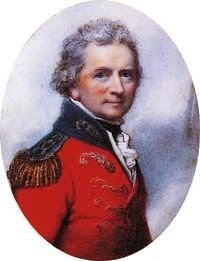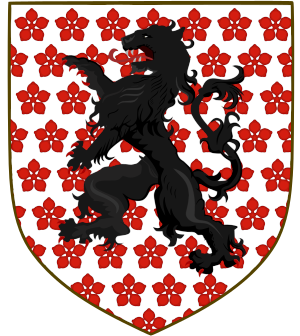Charles Pierrepont, 1st Earl Manvers facts for kids
Quick facts for kids
Charles Pierrepont
1st Earl Manvers |
|
|---|---|
 |
|
| Member of the Great Britain Parliament for Nottinghamshire |
|
| In office 1778–1796 |
|
| Personal details | |
| Born |
Charles Medows
4 November 1737 |
| Died | 17 June 1816 (aged 78) |
| Spouse | Anne Orton Mills |
| Children |
|
| Military service | |
| Allegiance | Great Britain |
| Branch/service | Royal Navy |
| Years of service | 1747–1769 |
| Rank | Captain |
| Commands |
|
| Battles/wars | |
Charles (Medows) Pierrepont, 1st Earl Manvers (born November 4, 1737 – died June 17, 1816) was an important British naval officer and politician. He served in the House of Commons, which is like a part of the government, from 1778 to 1796. Later, he was given a special title called a peerage, becoming Viscount Newark.
Contents
Who Was Charles Pierrepont?
His Early Life and Family
Charles was born Charles Medows. His parents were Philip Meadows and Lady Frances Pierrepont. Lady Frances was the daughter of William, Earl of Kingston.
Charles Medows was also the great-grandson of Evelyn Pierrepont, 1st Duke of Kingston-upon-Hull. This made him a future heir to important family lands and wealth.
Family Connections to Power
Charles Pierrepont came from a family with strong ties to politics and even royalty. His great-grandfather, Sir Philip Meadows, was a successful Member of Parliament. He even worked as an ambassador to other countries.
Later, Sir Philip's son, Sir Philip Meadowes, also held important positions. He worked with Sir Robert Walpole, who was like the Prime Minister of the time. This shows how connected Charles's family was to the most powerful people in Britain.
Another relative, Sir Sidney Meadows, helped manage Richmond Park for George III, the King. These family connections helped Charles in his own career.
Charles Medows studied at Oxford University. He then joined the Royal Navy as a midshipman. This was the start of his exciting career at sea.
He quickly moved up the ranks. By 1755, he became a lieutenant. In 1757, he was promoted to commander of a ship called Renown.
Commanding Warships
Later in 1757, he became a post-captain and commanded the frigate Shannon. He sailed with the Mediterranean Fleet.
In 1761, he took command of the 50-gun frigate Isis. He served on Isis in the Mediterranean until the war ended in 1763. Charles Medows left the Navy in 1769.
Inheriting Estates
In 1773, Charles's uncle, Evelyn Pierrepont, 2nd Duke of Kingston-upon-Hull, passed away. His uncle left his large estates, including Thoresby Hall, to his wife.
After she passed away in 1788, Charles Medows inherited these estates. To show his connection to the family, he officially changed his last name to Pierrepont.
Charles Pierrepont's Political Career
Becoming a Member of Parliament
Charles Pierrepont's family had a long history in politics. This helped him become a Member of Parliament for Nottinghamshire in 1778. He was a member of the Whig political party.
He served in the Commons until 1796. During this time, he supported important political figures like the Duke of Portland.
Rising to the Peerage
In 1796, Charles Pierrepont was given a special honor. He was made Baron Pierrepont and Viscount Newark. This meant he joined the peerage, a group of high-ranking nobles.
Later, in 1806, he received an even higher title: Earl Manvers. As an Earl, he served in the House of Lords, another part of the British government. He supported changes to farming and was a leader in the Board of Agriculture. He passed away in 1816.
Family and Children
Charles Pierrepont married Anne Orton in 1774. They had five children together:
- Hon. Evelyn Henry Frederick Pierrepont (1775–1801).
- Charles Herbert Pierrepont, 2nd Earl Manvers (1778–1860).
- Hon. Henry Manvers Pierrepont (1780–1858).
- Hon. Philip Sydney Pierrepont (born June 13, 1786 – died February 15, 1864).
- Lady Frances Augusta Pierrepont (died 1847).


